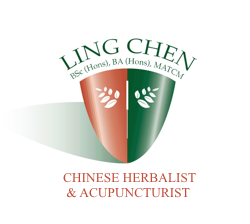

Traditional Chinese medicine (TCM) is a system of medical treatment that has evolved over thousands of years. It has been applied to the treatment of many medical problems, including stroke, heart disease, mental disorders, digestive problems and respiratory diseases (such as bronchitis and even the common cold). TCM practitioners use various practices such as herbal remedies, acupuncture, acupressure, moxibustion, cupping and tai chi to address health problems. They look at the interaction between mind, body and environment.
Acupuncture involves the insertion of needles into specific Acu-points on the body, that are known to be important in the healing process. It works by stimulating the body's own healing power and helps to restore both mental and physical balance in the body.
The World Health Organisation (WHO) lists 27 conditions for which acupuncture has been shown to be effective. There are many research trials which validate acupuncture. Some recent studies are cited under News on our web pages. The papers that have been cited, validate acupuncture in the treatment of, for example, menopause, migraine, infertility and backache, to just mention a few. Research continues into the application of further refinements of acupuncture.
There are different forms and techniques of acupuncture practiced throughout the world, but the basic principle is the same. Ling Chen practices traditional acupuncture combined with certain modern refinements.
Needles applied for acupuncture are quite small and very fine, so cause hardly any pain. They are sterilised and safely disposed of after each use.
Herbal remedies can be used either on their own or in combination with acupuncture. The use of plants to treat illness has developed over thousands of years in China. Research into the properties and therapeutic actions of Chinese herbs is being undertaken in several countries.
Herbal medicines may be for either internal or external use and come in the form of loose herbs for infusions, powders, pills, capsules, lotions, plasters etc. Each herbal prescription is tailored to the individual. Side effects are generally minimal if they are prescribed by a fully trained and qualified Chinese medicine practitioner.
Cupping is an ancient form of Chinese therapy in which a therapist puts special cups on your skin for a few minutes to create suction. It encourages the free flow of energy and blood circulation. Furthermore, it calms the nervous system, diminishes swellings, and unblocks congestion.
Cupping can be used to relieve neck and back pains, anxiety, fatigue, migraine, rheumatism, and even cellulite. For some people the effect is similar to deep tissue massage.
Moxibustion is a traditional Chinese medicine therapy which consists of burning dried moxa (mugwort, a type of lichen) on specific acu-points of the body. Moxa can be in the form of a stick, patches or cone.
Moxibustion may be used as an adjunct to acupuncture and is effective in treating a number of conditions such as poor circulation, menstrual problems, and notably in breech pregnancies where it can help to move the baby into the correct position for normal delivery.
Tui Na, the Chinese form of massage literally means "push and grasp". It is a deep, vigorous form of body work. Tui Na stimulates the flow of energy and promotes balance and harmony in the body. It is used to treat the sorts of conditions that are helped by acupuncture and may be used to reinforce the effect of acupuncture.
By applying pressure to acupoints along the body meridians and groups of muscles, Tui Na removes blockages and works deeply to promote positive energy of the body. As with acupuncture, Tui Na massage is especially useful in the treatment of musculoskeletal pain.